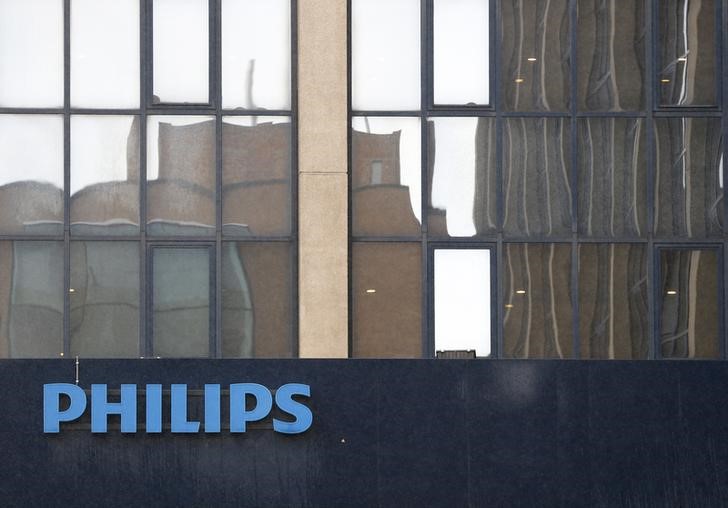By Geoffrey Smith
Investing.com -- Philips (AS:PHG) provided a stark illustration of what’s at stake as the U.S. and China prepare to resume talks on resolving their trade dispute Thursday.
The Dutch medical goods and services group said it would miss expectations for profits by a country mile in the third quarter and was forced to admit its three-year streak of big improvements in profit margins would end this year as a result.
The full results are due out on Oct. 28.
The company’s shares fell nearly 9% in reaction, their biggest drop in over a year, dragging the local AEX index down by 0.6%.
That’s on a day when Europe’s stock markets were choppy but essentially range-bound as they assessed pre-negotiation spin coming from the two trade teams via U.S. and Chinese media. The Stoxx 600 was down less than 0.1% at 380.24 by 5:15 AM ET (0915 GMT), while the U.K. FTSE 100 was essentially unchanged and the German DAX was up 0.2%.
For each of the last three years, Philips has raised its favored profit margin measure by at least 1 percentage point (it's been rewarded by a near-doubling of its shares price since mid-2016). CEO Frans van Houten said this year’s improvement, by contrast, is going to be a meager 10-20 basis points instead (a basis point is one-hundredth of a percent). He promised to step up “mitigating actions” (read – ‘cost cuts’) to address the problem.
The shares were arguably ripe for a correction, having risen to a 19-year high this year. Even after the 9% drop, at 27 times trailing earnings, they still don’t look cheap, and a dividend yield of barely 2% is hardly enough to tempt income investors.
Even so, with the structural overhaul that Philips has achieved in the space of three years, van den Houte has accumulated a lot of capital with investors, and its businesses still look healthy if one looks through the short-term noise around the trade war. Van Houten noted that “growth momentum is still strong,” and a 6% rise in currency-adjusted sales would seem to back that up. Order intake was flat against an exceptionally strong year-earlier period.
In that context, Thursday’s drop could easily turn out to be a buying opportunity. The risk is that, if the trade talks in Washington break down, it could be just an invitation to catch a falling knife.
The same may well be said about a lot of stocks by the time the quarter’s earnings season is over.
